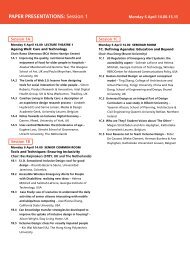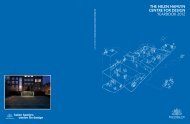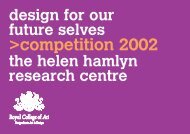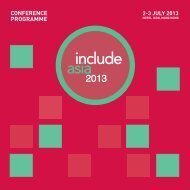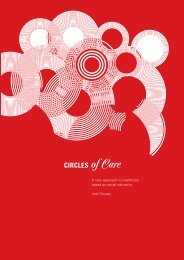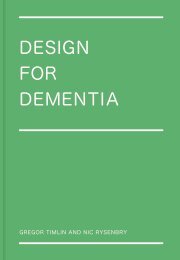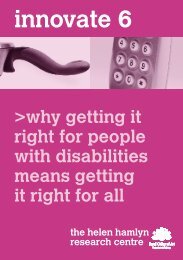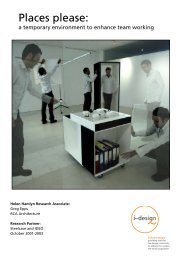Redesigning the Emergency Ambulance - Helen Hamlyn Centre ...
Redesigning the Emergency Ambulance - Helen Hamlyn Centre ...
Redesigning the Emergency Ambulance - Helen Hamlyn Centre ...
- No tags were found...
Create successful ePaper yourself
Turn your PDF publications into a flip-book with our unique Google optimized e-Paper software.
REDESIGNING THE EMERGENCY AMBULANCE 7<br />
The Need for Change<br />
In June 2008 Lord Darzi’s report ‘High quality care for all:<br />
NHS Next Stage Review’ outlined plans to create<br />
specialised heart, stroke and trauma units. The report also<br />
recommended utilising alternative care pathways similar<br />
to those provided in community settings, such as urgent<br />
care centres and community health teams.<br />
An important and integral component of this<br />
community-based approach was an improved mobile<br />
healthcare system provided by ambulance services,<br />
moving away from <strong>the</strong> traditional approach of<br />
transportation to hospital, in favour of a ‘treat-atscene-and-refer’<br />
model of healthcare.<br />
The need for change within <strong>the</strong> <strong>Ambulance</strong> Service<br />
The Information <strong>Centre</strong> for Health & Social Care<br />
reported that in 2009/10 <strong>the</strong>re were a total of 7.87 million<br />
ambulance 999 calls. Approximately 40% did not require<br />
treatment in an A&E department, so over three million<br />
patients were transported unnecessarily to hospitals in<br />
<strong>the</strong> UK as a result of <strong>the</strong> lack of alternative methods and/<br />
or pathways for treatment. This figure alone illustrates<br />
that an approach aimed at significantly increasing <strong>the</strong><br />
proportion of healthcare treatments delivered in <strong>the</strong><br />
community, ra<strong>the</strong>r than in hospital, could subsequently<br />
improve <strong>the</strong> quality and effectiveness of care, while<br />
delivering considerable cost savings – and reducing <strong>the</strong><br />
pressure on emergency services within <strong>the</strong> NHS.<br />
<strong>Ambulance</strong> services across <strong>the</strong> UK have recognised<br />
that in order to improve quality, efficiency and<br />
cost-effectiveness, <strong>the</strong>y need to change. In recent years<br />
this understanding has led to <strong>the</strong> introduction of a wider<br />
range of different, often smaller and less expensive<br />
responder vehicles to treat and refer patients where <strong>the</strong>y<br />
are (for example at home, school or work). However, <strong>the</strong><br />
figures cited above suggest that <strong>the</strong>se changes alone<br />
have not achieved <strong>the</strong> ambitions set out in <strong>the</strong> Darzi<br />
review.<br />
In order to effect real change and improvements in<br />
care, <strong>the</strong> ambulance service must be able to bring more<br />
of <strong>the</strong> skills and facilities of <strong>the</strong> hospital to <strong>the</strong> patient.<br />
This will in turn better enable ambulance staff to deal<br />
with those urgent care problems that do not necessarily<br />
require a trip to hospital, <strong>the</strong>reby providing <strong>the</strong> patient<br />
with <strong>the</strong> ‘right treatment in <strong>the</strong> right place at <strong>the</strong> right<br />
time’. However, to be successful, <strong>the</strong>se changes in vehicle<br />
design and treatment approach will also require better<br />
training, in particular increasing <strong>the</strong> diagnostic skills and<br />
knowledge of ambulance clinicians to enable <strong>the</strong>m to<br />
treat and discharge patients on-scene. Again, ambulance<br />
services in <strong>the</strong> UK have recognised this need and have<br />
responded in part by introducing <strong>Emergency</strong> Care



